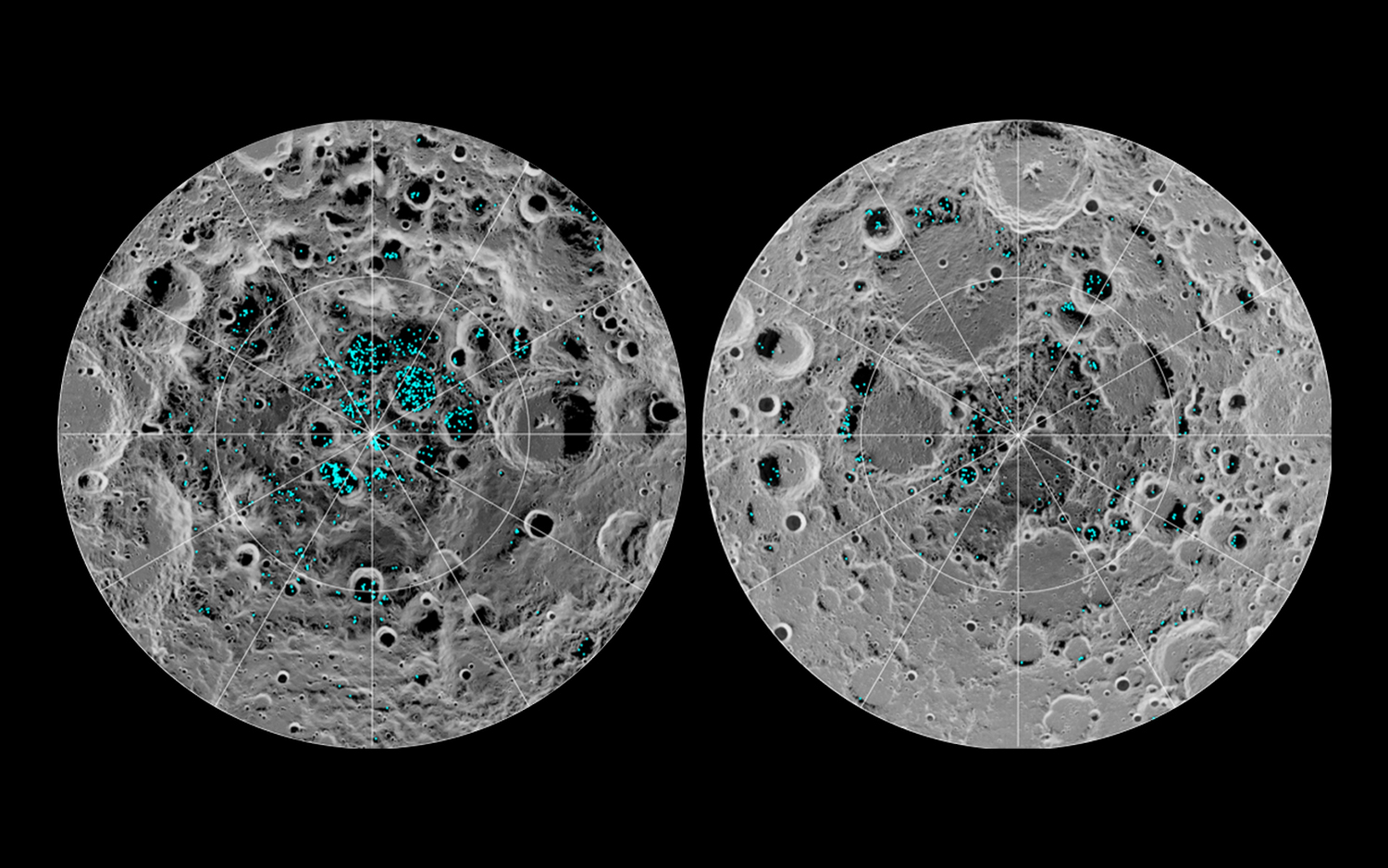Ice on the Moon! Frozen Reserves Detected at the Poles in a Lunar First

Scientists have detected the first-ever evidence of frozen water on the moon, on the darkest and coldest parts of the lunar surface.
While prior analysis of the moon hinted at some ice reserves, this is the first time that ice has been observed at the north and south poles — and the signs of water ice are "direct and definitive," according to a new study.
Researchers peered at suspected icy patches using an instrument called the Moon Mineralogy Mapper (M3), which used the near-infrared spectrum to pinpoint the signature activity of ice molecules interacting with infrared light. This helped the scientists to distinguish the frozen water from other types of ice or water in a different form — such as bound up in minerals — and they identified ice deposits dwelling in permanent shadows at the moon's north and south poles. [Photos: Mysterious Objects Spotted On the Moon]
Most of the ice was found in surface craters that are never touched by direct sunlight, and where temperatures hover around minus 250 degrees Fahrenheit (minus 157 degrees Celsius), though not all of these "cold traps" contained ice, the scientists reported.
They then mapped the ice "pixels," generated by the M3 data, and found that they lined up with the findings of other instruments that also hinted at the presence of water ice, the study authors wrote.
Still, what little ice the scientists discovered was "patchy" and not very abundant, showing up in only 3.5 percent of the shadowy areas they investigated. It did not appear in cold traps that were more recent geological formations, suggesting that the ice is very old, and is likely not replenished quickly, according to the study.
The researchers also noted differences in the distribution of ice at the north and south poles: Ice in the southern pole was concentrated in several craters at the center, while ice at the northern pole was scantier and spread out over a wider area.
Sign up for the Live Science daily newsletter now
Get the world’s most fascinating discoveries delivered straight to your inbox.
Pockets of lunar ice can provide scientists with valuable clues about the composition and activity of the moon and other icy bodies in the inner solar system, the scientists said. Ice on the moon could also potentially be an important resource for space travel; mining lunar ice and converting it to rocket fuel could extend the reach of future missions to deep space, Live Science previously reported.
The findings were published online yesterday (Aug. 20) in the journal Proceedings of the National Academy of Sciences.
Original article on Live Science.

Mindy Weisberger is an editor at Scholastic and a former Live Science channel editor and senior writer. She has reported on general science, covering climate change, paleontology, biology and space. Mindy studied film at Columbia University; prior to Live Science she produced, wrote and directed media for the American Museum of Natural History in New York City. Her videos about dinosaurs, astrophysics, biodiversity and evolution appear in museums and science centers worldwide, earning awards such as the CINE Golden Eagle and the Communicator Award of Excellence. Her writing has also appeared in Scientific American, The Washington Post and How It Works Magazine. Her book "Rise of the Zombie Bugs: The Surprising Science of Parasitic Mind Control" will be published in spring 2025 by Johns Hopkins University Press.










